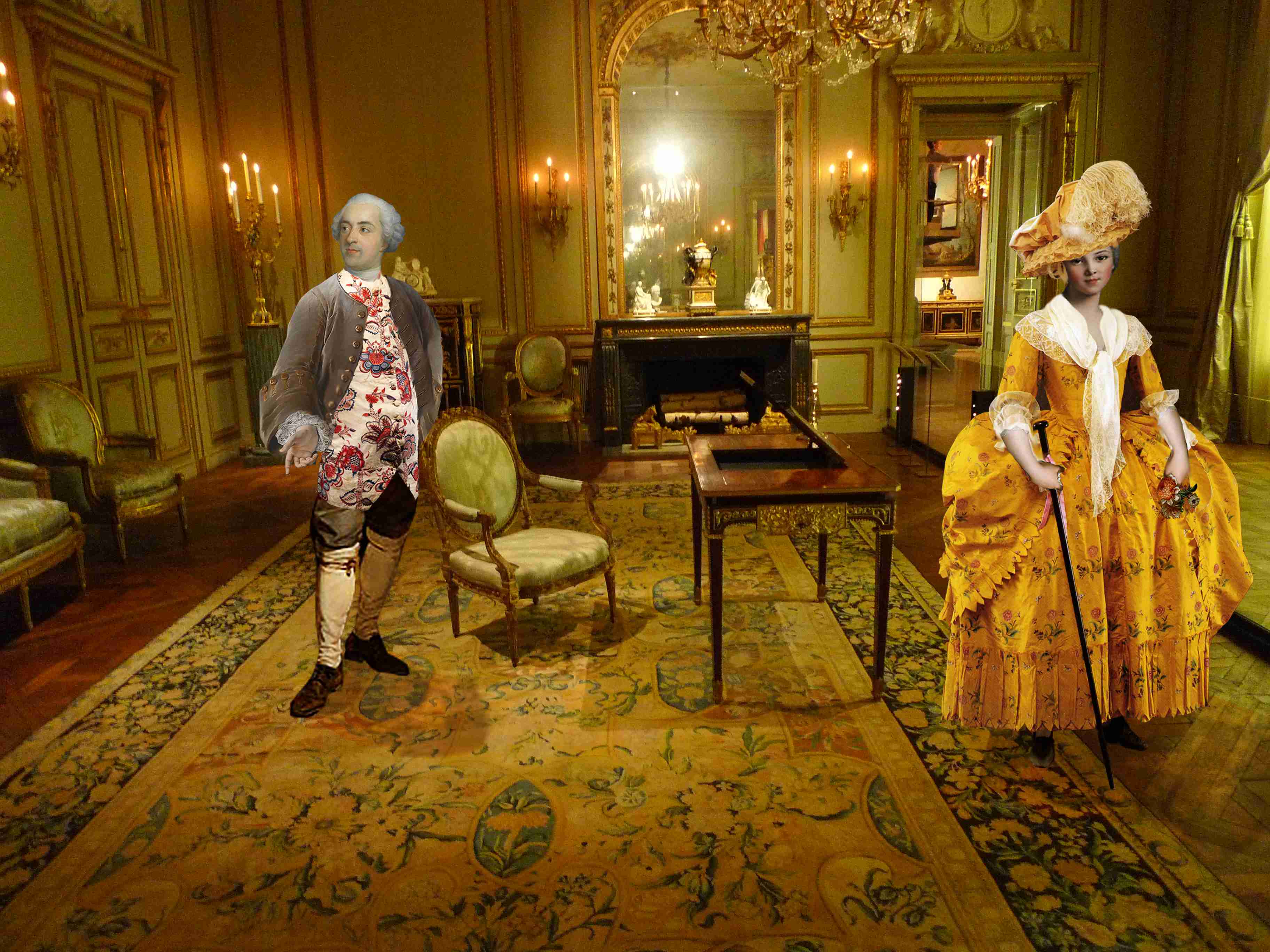AT HOME
The composite Photoshopped image reintroduces period-accurate figures into the static museum space.
Dress (Robe à la Polonaise)
France, 1780-85
Textile: China
Silk, yellow silk from China with hand-painted multicolored floral sprays
The Metropolitan Museum of Art, New York
Gift of Heirs of Emily Kearny Rodgers Cowenhoven Gift, 1970
1970.87a,b
Silks were an important indicator of taste and status in eighteenth-century Europe. These silks are usually attributed to Chinese weavers, but were regularly imported and sold to the wealthiest Parisians. The yellow color was worshiped in ancient China and was often considered a symbol of regality connected to the Emperor.
Polonaise gowns (“Polish gowns”) first came into fashion in 1770. They had close-fitting bodices and the skirt was gathered up into three sections to reveal the petticoat below. The stays used were not markedly different from those that supported the “robe à la française” (or “French dress”).
Waistcoat
France, 1770-90
Textile: India, mid-18th century
Cotton, printed and painted resist and mordant, dyed, with applied gold leaf, silk lining
The Metropolitan Museum of Art, New York
Rogers Fund, 1935
35.142
This piece appears to be made out of printed cotton from India, and would have been called a ‘bayan.’ As Europeans expanded their trade networks they imported Indian cotton due to the bright colors, light weight, and ease in laundering. Designs were often adapted in order to appeal to the European markets.
Tailors adjusted the waistcoat to perfectly match the body of the client. This example has a shorter length and low pockets. It would have also had a matching coat with a tight fit and set in sleeves.

